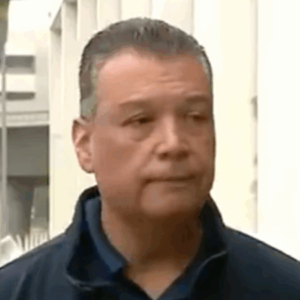Introduction
Every so often, life delivers a blow so profound that it fractures the world you’ve meticulously built. For Edith, that blow came with the phone call she’d been dreading: her mother, her anchor and confidante, had passed away. In the days that followed, grief washed over her like a relentless tide, revealing fissures in her marriage she never knew existed. What began as unthinkable sorrow became a journey of self-discovery, empowerment, and the painful but necessary reckoning of what it means to truly have—and to be—loved.
This narrative unpacks Edith’s emotional trajectory—from the initial shock and despair, to the discovery of her husband’s indifference, the calculated act of reclaiming power, and finally to the tentative reconstruction of a more honest, balanced partnership. Along the way, we explore themes of loss, loyalty, accountability, and the enduring capacity for growth and forgiveness.
1. The Call That Changed Everything
1.1 A Shift in the Ordinary
It was mid-shift at the hospital when Edith’s phone rang—a call she had anticipated yet never fully prepared for. As an experienced nurse, she had comforted countless families through loss, but receiving the news herself felt like a cruel inversion of her world. In one moment, she monitored vital signs and reassured anxious loved ones; in the next, she was a patient of her own grief.
Her drive home is a blur: the overhead hospital lights replaced by the streetlamps of a quiet evening, her hands trembling on the steering wheel. By the time she reached her front door, the gravity of her loss settled in like a physical weight.
1.2 Entering an Empty House
Stepping inside, Edith was greeted by the familiar sight of her husband, John, perched at the kitchen counter, sipping coffee. It should have been a comforting tableau—home, love, routine—but that night, it felt alien. She called his name, voice cracking. His response was delayed, detached:
“What’s wrong? You look terrible.”
She stood frozen, unable to bridge the chasm between shock and articulation. When she simply extended her arms, seeking solace, his consolation consisted of an awkward pat on the back, followed by:
“Oh. Wow. I’m sorry, honey. Want me to order takeout tonight?”
It was the moment she realized she would be traversing her grief alone.
2. Navigating the Void of Grief
2.1 The Overwhelming Logistics
Funeral planning pressed in on Edith with the unrelenting force of reality. There were phone calls to clergy, obituaries to write, pallbearers to contact. Each decision felt like a betrayal—moving forward when all she wanted was to pause time and hold on to her mother for just a moment longer.
John, meanwhile, remained curiously aloof. He offered no comfort, asked no questions, simply continued with his daily routines—work meetings, golf outings, and even a pre-booked vacation to Hawaii.
2.2 The Fracture in Partnership
When Edith broached the subject of canceling their trip, John balked:
“We can’t cancel. The tickets are non-refundable. Besides, I’ve already scheduled my tee times.”
His priorities crystalized the harsh truth: he valued a holiday round of golf more than supporting his wife in her darkest hour. Edith’s heartbreak deepened—not just from her mother’s death, but from her husband’s emotional absence.
3. The Reckoning of Power
3.1 John’s Return
Two weeks later, John returned from Hawaii, bronzed and oblivious to the storm that had raged at home. He walked into a house that was no longer the cozy refuge he remembered. Instead, it had become a battleground for control.
His prized Porsche sat conspicuously in the driveway, sparkling under the afternoon sun. Edith had orchestrated this: a real estate listing, complete with staged photography featuring his car—and their home—on the market.
3.2 Confrontation at the Kitchen Table
John’s panic was instantaneous. He stormed into the kitchen:
“Why is my Porsche being looked at by strangers? And why did you even put the house on the market?”
Edith met his fury with an icy calm. She set down her coffee mug and offered a faint smile:
“Oh, that. I thought a Porsche in the driveway would help the listing stand out. You know, add curb appeal.”
The color drained from his face as he fumbled for his phone, dialing his sister, Sarah:
“This listing has to come down. I never agreed to any of this!”
Edith leaned back, savoring the moment:
“By all means, call her. But before you do, maybe ask her about your vacation photos. I saw the sunset shots—looks like you had a wonderful time while I was burying my mother.”
4. The Unraveling of Illusions
4.1 Guilt and Denial
John’s bravado disintegrated under the weight of shame. His voice cracked:
“I—I’m sorry. I didn’t know you’d take it this far.”
Edith’s reply was steady, unyielding:
“You didn’t think. That’s the problem. You never think when it matters.”
He flailed, trying to retract the listing, but the online portals were mercilessly permanent. Showings were scheduled. Inquiries poured in. The house—and the Porsche—were, for all intents and purposes, for sale.
4.2 A Fractured Apology
Later that afternoon, a beaten John approached Edith, shoulders hunched:
“Edith, please. I… I didn’t mean to hurt you. I was just trying to cope.”
Edith crossed her arms:
“Cope? By escaping to Hawaii? While I organized my mother’s funeral alone? You think ‘sorry’ can undo that?”
He nodded miserably, his eyes brimming with tears of regret—or perhaps of self-pity.
5. Claiming Agency
5.1 The Power of Setting Boundaries
In that charged moment, something shifted within Edith. She realized she had spent years accommodating John’s whims—cancelling her own plans, smoothing over his indifference, brushing aside her own needs. No more.
She stood up, voice resolute:
“Here’s the deal: I refuse to be your emotional punching bag. I’m done pretending everything’s fine so you can avoid your responsibilities.”
Her words hung in the air, a verdict she issued both against him and against her own passivity.
5.2 Demanding Change
John looked up, stunned but attentive:
“What can I do to make it right?”
Edith fixed him with a steady gaze:
“You can start by acting like a partner—not a roommate. I need real support, not grand gestures.”
He swallowed hard:
“I love you, Edith. I want to try.”
For once, his desire to fix things felt earnest.
6. The Unsteady Path of Repair
6.1 Early Efforts
In the days that followed, John’s apology manifested in small but meaningful ways:
-
He sat with Edith through her tears, offering an arm rather than an escape.
-
He accompanied her to appointments—to the funeral home, to grief counseling sessions.
-
He reached out to family members not to arrange tee times, but to express condolences.
Nothing grand, but everything felt genuine.
6.2 The Flowers
One Saturday morning, John appeared at Edith’s door clutching a bouquet of lilies—her mother’s favorite.
“I know this doesn’t fix everything,” he said softly, voice thick. “But I wanted you to know I’m sorry.”
Edith accepted the flowers, gratitude and pain mingling in her chest:
“Thank you. It’s not about flowers—it’s about showing up.”
He nodded, and for the first time, she believed he was listening.
7. Building New Foundations
7.1 Couples Therapy
Recognizing that words alone wouldn’t cement their fragile progress, Edith suggested—and John agreed to—couples therapy. The sessions were raw and at times brutal:
-
Revisiting the Funeral: John confronted the memory of Edith standing alone at the gravesite.
-
Exploring Patterns: They traced years of small neglects—cancelled date nights, unreturned calls, emotional unavailability.
-
Learning Communication: They practiced “I” statements—“I felt abandoned when…”—rather than accusatory “You never…”
Therapy provided a structured space to unearth wounds and practice new behaviors.
7.2 Shared Goals
At home, they drafted a “partnership pact”:
-
Weekly Check-Ins: Carving out thirty minutes every Sunday to share wins, stresses, and needs.
-
Crisis Protocol: If one partner faces a major event—illness, loss, job change—the other assumes primary logistical support.
-
Personal Space: Agreements on individual time—allowing Edith to visit her counseling group, and John to maintain his golf hobby, but with respect to each other’s schedules.
Small commitments, but each carried weight.
8. A Journey of Individual Growth
8.1 John’s Self-Work
Away from the marriage, John embarked on his own transformation:
-
Therapy: Weekly sessions to address avoidant tendencies and his discomfort with vulnerability.
-
Journaling: Recording moments when he felt helpless, and celebrating times when he chose to stay present.
-
Accountability Partner: Checking in with a trusted friend after therapy sessions to reinforce his new insights.
These steps cultivated humility and empathy.
8.2 Edith’s Resilience
Edith, too, confronted her own patterns:
-
Letting Go of Perfection: Allowing herself to make mistakes in her professional and personal life.
-
Expressing Needs: Learning to articulate her grief and desires without fearing she would burden others.
-
Reclaiming Joy: Reconnecting with hobbies—painting, weekend hikes—to nurture her spirit beyond caregiving.
Her grief remained, but it no longer consumed her identity.
9. The Test of Time
9.1 New Challenges
Just as stability seemed within reach, life tested them again: Edith lost another close family member. This time, however, John did not flee. Instead:
-
He took time off work to attend memorial services.
-
He coordinated home logistics so Edith could focus on mourning.
-
He held her hand through moments of overwhelming sorrow.
It wasn’t perfect grace, but it was unwavering presence.
9.2 Solidifying a New Normal
Over months, patterns shifted:
-
Shared Mornings: John began bringing Edith coffee and reading her a brief note of appreciation.
-
Collaborative Decisions: They co-owned every financial and lifestyle choice, from household budgets to vacation plans.
-
Emotional Check-Ins: When either noticed distance, they paused to reconnect rather than let resentment fester.
Their marriage evolved from a convenient arrangement to a dynamic partnership.
10. Reflections on Love and Loss
10.1 The Myth of Grand Gestures
Edith realized that romance is not measured by grand vacations or flashy gifts. True love is built in:
-
The 2 a.m. phone call when grief won’t let you sleep.
-
The shared silence on a rainy afternoon.
-
The commitment to show up even when understanding fails.
These quiet acts became the mortar that bound them.
10.2 The Power of Vulnerability
Both partners learned that vulnerability is not weakness. Admitting fear, shame, and regret opened the door to deeper intimacy. Their willingness to be seen in pain proved the greatest balm for their wounds.
11. Looking Forward
11.1 Committing to Continuous Growth
They drafted a new vision for their marriage:
-
Annual Retreat: A weekend dedicated to reflection, planning, and reconnection.
-
Monthly Book Club: Reading and discussing literature on relationships, grief, and personal development.
-
Community Service: Volunteering together at a local hospice, honoring Edith’s nursing roots and shared compassion.
By scheduling these activities, they ensured their bond remained active and evolving.
11.2 Embracing Imperfection
They acknowledged that setbacks would occur:
“We’re not perfect,” John said one evening, “but I trust us to navigate the imperfections together.”
Edith smiled, realizing that this trust—hard-won through crisis and recovery—was their greatest achievement.
Conclusion
Edith’s journey from crushing loss to resilient partnership illustrates the transformative power of grief when met with honesty and accountability. Her mother’s passing cracked open hidden fissures in her marriage, forcing both partners to confront indifference, neglect, and the fear of vulnerability. Through firm boundaries, intentional repair, and shared commitment, they rebuilt a relationship not on convenience but on genuine presence.
For any couple facing a similar reckoning, this story offers both warning and hope. Grief can either deepen divides or catalyze growth—depending on whether we choose to show up for ourselves and for one another. True love, it turns out, is less a fairy-tale ideal and more a daily practice of listening, empathizing, and staying—even when it hurts.






